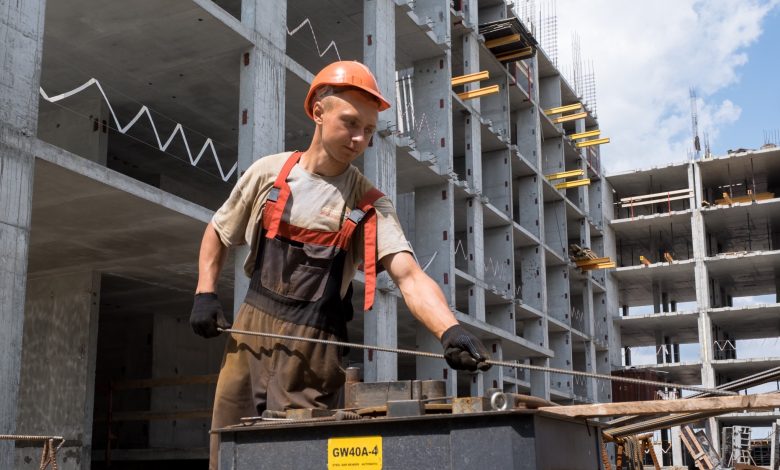Hot-rolled Steel vs. Cold-rolled Steel: A General Overview

If you’ve ever wondered the difference between hot-rolled steel and cold-rolled steel, you’re not alone. Steel comes in a vast number of shapes, finishes, grades, and specifications, so it can be confusing to navigate if you’re not an expert. Many people who need steel tubing for various applications wonder what the difference is between hot-rolled and cold-rolled steel, which of the two is stronger, etc. It may seem confusing, but this article will break down for you the differences and significant advantages and disadvantages of hot-rolled and cold-rolled steel.
Table of Contents
Differences Between Hot-Rolled and Cold-Rolled Steel
In terms of steel, there are a few differences between cold-rolled and hot-rolled steel. However, the primary difference between the two is in the manufacturing process. As you might guess, hot-rolling steel is manufactured and processed with heat. Though you might think cold-rolling steel involves freezing temperatures, it’s actually manufactured around room temperature. However, when it comes down to it, cold-rolled steel is basically hot-rolled steel that has undergone more processing right after it cools.
When hot-rolled steel is finished cooling, it’s then re-rolled to attain better qualities and more exact dimensions and specifications. If you want some more information on hot-rolled and cold-drawn steel, check out the website of Webco Industries. They’re a trusted steel manufacturer that makes hot-rolled and cold-rolled steel for a wide variety of applications, so they have the expertise and experience necessary to manufacture superior-quality steel.
When it comes to steel piping, cold-rolled pipes tend to have a smaller diameter, and vice versa for hot-rolled, as they’re typically larger. They also have more differences when it comes to the manufacturing process. The two main categories are hot-rolled seamless steel pipes, also known as extruded, and cold-rolled seamless pipes, also known as cold-drawn steel pipes. The manufacturer can then split the cold-drawn seamless tubing into a round or unique shape.
Cold-Rolled Steel
One of the benefits of cold-rolled steel is that it’s generally much stronger, more durable, and harder than steel that has been manufactured using a hot-rolled process. However, cold-rolled steel is technically only applicable to sheets that have been compressed in rollers. Cold-drawn steel is pulled, typically as bars or tubes.
If you need steel for an application that must be incredibly precise, look cosmetically perfect, and has very technical specifications, then cold-rolled steel is the steel for the job. However, due to cold-rolled steel’s superior characteristics, it costs more than hot-rolled steel. Cold-rolled steel also has a slightly greasy or oily finish and is smooth and polished when finished.
Benefits of Cold-Rolled Steel
Cold-rolled steel comes with its own unique benefits that make it perfect for specific applications, mainly when the project calls for steel with superior technical precision. Some benefits of using cold-rolled steel include:
- It comes in a variety of available surface finishes
- It can be manufactured with technical precision
- Provides superior resistance against tension breaking
- It can be formed and shaped with relative speed
- It has a smooth surface with no imperfections
- It can be finished with defined corners and edges
- Provides a more consistent level of uniformity
- It’s up to 20% stronger than hot-rolled steel
Disadvantages to Using Cold-Rolled Steel
Cold-rolled steel offers many advantages, that’s plain. It also provides some disadvantages: for starters, it’s much pricier than hot-rolled steel. Another disadvantage is that all the processing treatments it undergoes can cause stress inside the steel itself. These internal stressors need to be relieved before working the steel, such as grinding or cutting. Otherwise, it can cause deformity and warping. The cold-rolling steel process also takes longer than hot-rolling, which can be a disadvantage if you need steel formed exceptionally fast.
Hot-Rolled Steel
Hot-rolled steel is formed and shaped easily at extremely high temperatures: up to 1700° Fahrenheit. When the hot-rolling process begins, a large piece of metal called a billet is heated and then flattened. After it’s heated, the steel is then pushed at very high speeds through a multitude of rollers so that the manufacturer can shape it into its final dimensions. In fact, the hot-rolling process is above the steel’s recrystallization temperature, so it allows the steel to be shaped or formed with ease. This makes using hot-rolled steel perfect for applications where larger steel pieces are needed. , However, hot-rolling steel can have some ambiguity to the final shape because the cooling process can make steel shrink, causing unexpected changes in its shape. That’s why hot-rolled steel is ideal for applications where being technically precise is not necessary.
Steel and metals, in general, come in virtually endless classifications, specifications, and grades. If you’re wondering how to identify hot-rolled steel, you can use a few distinctive characteristics to determine its manufacturing process. Hot-rolled steel often has slight deformities that look similar to a trapezoid. Those trapezoid-shaped distortions are formed during cooling. Steel manufactured using a hot-rolling process can also end up with scaling on the surface and edges that look more rounded. The rounded edges are often due to slight shrinking and the overall finishing process, which is not as precise as cold-rolled steel.
Benefits of Hot-Rolled Steel
You already know that hot-rolled steel is better for applications like railroad ties or I-beams, where a tremendous amount of precision is not required. However, it does offer more benefits than just being ideal for specific applications. Some of these benefits include:
- It’s much less expensive than cold-rolled steel
- Hot-rolled steel requires a lot less processing
- It’s perfect for painting or other surface coatings
- It can be polished for a smooth, scale-free finish
- Hot-rolled steel is easy to shape and manufacture
- There are no internal stressors that can cause warping
- Hot-rolling can eliminate defects and imperfections
Disadvantages of Hot-Rolled Steel
Hot-rolled steel does have some disadvantages. In fact, hot-rolled steel can suffer from micro-deformities, distortions, and imperfections. These tiny distortions result from the process it undergoes, which involves rapid heating and cooling. Hot-rolled steel also tends to have a rougher texture and scaling. These cosmetic imperfections can be removed, but it involves time-consuming labor such as grinding, buffing, and polishing before it can be painted or have any other surface coating.
Final Thoughts on Hot-Rolled Steel vs. Cold-Rolled Steel
Hot-rolled and cold-rolled steel are at two different ends of the spectrum. Though they may have differences, hot-rolled and cold-rolled steel are perfect for a wide variety of applications. Hot-rolled is better for projects that don’t require cosmetic perfection or a polished aesthetic. Cold-rolled steel is ideal for projects that require exact technical precision and dimensions. No matter what your task at hand, there’s sure to be hot-rolled or cold-rolled steel that will fit perfectly for your needs.



